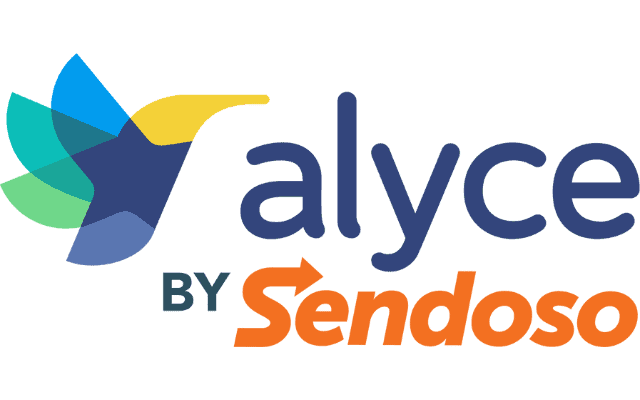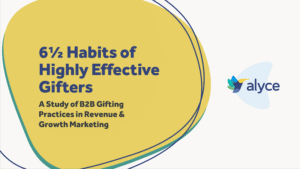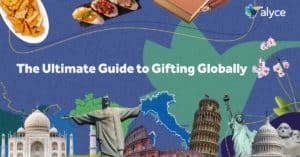State of Gifting Report
Top trends and insights we learned from analyzing gifts sent in Q1–Q3 2021 with Alyce.
Introduction
2021 will forever be known as the year of adaptation for businesses. With employees shifting away from office hubs to a “work from anywhere” model, businesses had to adapt their marketing and sales strategies to be digital-first in order to continue to meet buyers where they are.
However, this digital-first adaption opened up the proverbial communication flood gates. B2B buyers are now being served thousands of transactional marketing touches on average per week; that’s upwards of 10K advertising messages per day (Forbes and Red Crow Marketing) and 600 emails per week (Campaign Monitor).
Marketing pollution is a very real challenge so it’s no surprise that it has become harder than ever to earn attention and win business. A recent Showpad survey found that 45% of B2B organizations say it’s been more difficult to close deals since the beginning of the pandemic.
Gifting is one of the premier channels to emerge this past year, cutting through this digital noise by delivering unexpected experiences that convert along that customer journey. Coresight Research has determined that upwards of $242B will be spent on corporate gifting in 2021. With gifting on the rise, how do we reimagine this channel’s approach and bring it into the 21st century? How do we marry the physical and digital worlds (phygital, if you will 😊 ) in a way that optimizes for outcomes over outputs?
A digital-first gifting approach requires a transition away from the legacy approach of filling a warehouse with pre-purchased inventory, acquiring all recipients’ preferred shipping addresses, and paying for pick and pack services.
It’s about time B2B gifting gets a glow-up: personal gifting.
Alyce’s unique approach to gifting is all about optimizing your gifting spend, accelerating results, and achieving greater business impact by combining experience, intelligence, and execution in new ways. The State of Gifting Report outlines how our customers have been using personal gifting in their sales and marketing strategies this past year.
For this report we analyzed data from the Alyce gifting platform between October 2020 through September 2021, reflecting the latest business conditions and how our clients (and Alyce) have shifted towards corporate gifting during the pandemic. From this analysis, we have captured insights which include:
- Gifting budget & performance trends (when & how to maximize gift acceptance)
- What types of gifts book meetings
- The importance of gift recipient declared data
- Diversification of gifting use cases
- Optimal gift follow up windows
We hope these insights help you make more informed decisions within your personal gifting strategies that create more relevant experiences for your buyers.
01.
Gift budgeting and performance trends
When it comes to figuring out how you should be budgeting, one way to think about it is by accounting for how many accepted gifts you believe your campaigns will drive.
In other words, your claim rate. Claim rate is the most varied and independent variable in this simplified three-part formula for thinking about your monthly gifting budget.
Expected number of gift invitations sent x your average claim rate x your average gift price.
Claim rates will vary depending on many factors of your gifting campaign, such as seasonal and promotional considerations, with the holiday season typically having the highest conversion rate.
Utilizing a required action will also have a significant impact on your claim rates. Incorporating a required action (e.g., requiring a meeting) can be a valuable tool within Alyce’s B2B gifting platform when used for the right audience, but be prepared to consider that required actions decrease the overall acceptance rate of your gifts.
According to gifting data collected over the 12 months from October 2020 through September 2021, the average sent-to-accepted rate declines by almost 60% for door opener gifts with meeting requirements.
When it comes to budgeting across the year, we asked ourselves, “Which months during the year can we drive the highest claim rates for the lowest cost? Does it make sense to plan our campaign around market trends for gift volume and acceptance rates?”
To investigate these questions, we looked at how our customers' budgets were spent/distributed throughout the year, and compared them with how claim rates increased and decreased within the same timeframe and sample of customers.
In the graph below, we see that these two indices (budget and claim rate) are highly correlated, since Alyce budget is spent as gifts are claimed. Where these two lines diverge could indicate points at which the market is spending more or less per claimed gift (getting more bang for their buck), but for the most part, they move together. From the graph we can see that both measures peaked around two key periods for gifting: December (the holidays) and Q1/April.
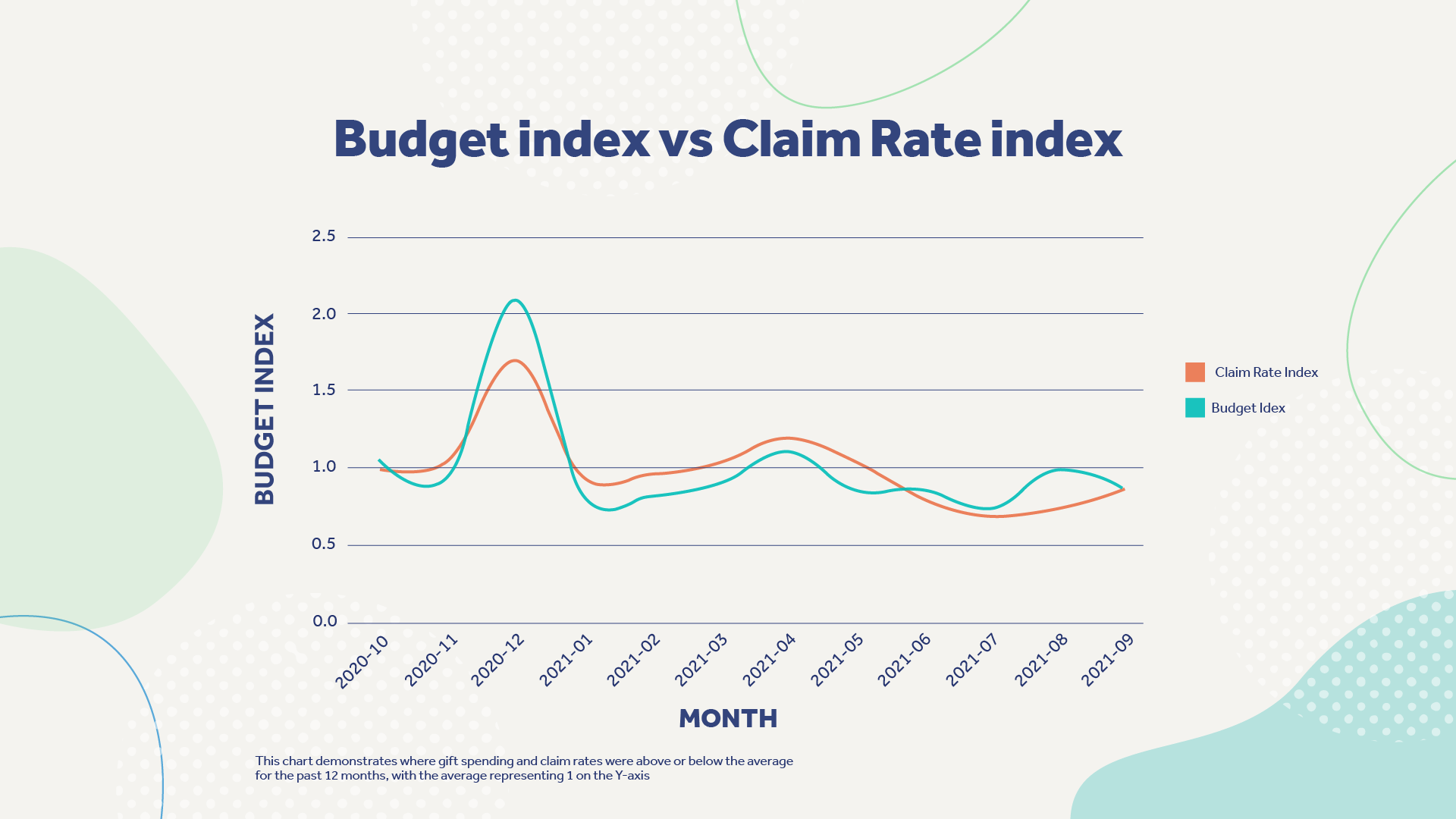
The December spike is natural when holiday gifting picks up significantly, usually without meeting requirements, simply as a way to say thank you and continue to maintain relationships even after a deal has closed. The budget index increased at a higher rate than the claim rate, a sign of increased spending per gift.
The other notable increase in both budget spend and claim rates is gradual over the first quarter of the year (January through March). Q1 is a time when both marketing and sales budgets are picking up after the sharp rise and fall in spending in Q4.
In the second case, the claim rate index outpaces the budget index.
When the claim rate index exceeds the budget index, this means the rate at which our customers were spending was not increasing as fast as the rate at which recipients were claiming their gifts. These are times when if cost efficiency is your primary goal, you could possibly see what is higher than your typical claim rate while making smaller (or zero) increases to your budget.
Now that we know what times of year gift budgets and claim rates are highest, the next logical place to dig in is on average gift cost.
The average gift price for gifts sent and claimed with at least one requirement, was $80.71. This is largely due to the use case of door opener, where people tend to invest more into the recipient experience. However, the average price for gifts sent and claimed with no requirements at all was $54.15.
Using these insights on ideal times to send gifts and at what price point, let’s dive into what gifts you should be sending next.
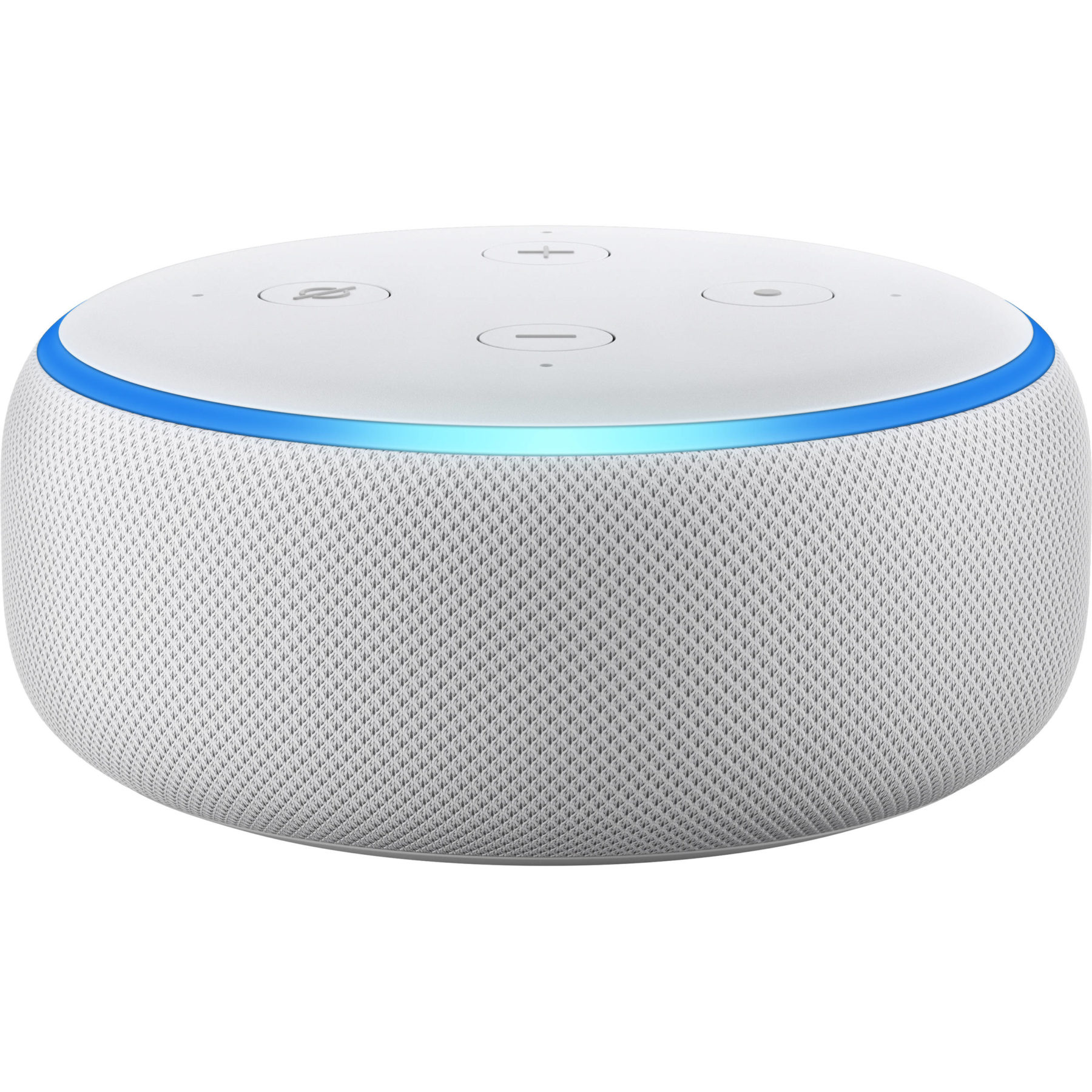
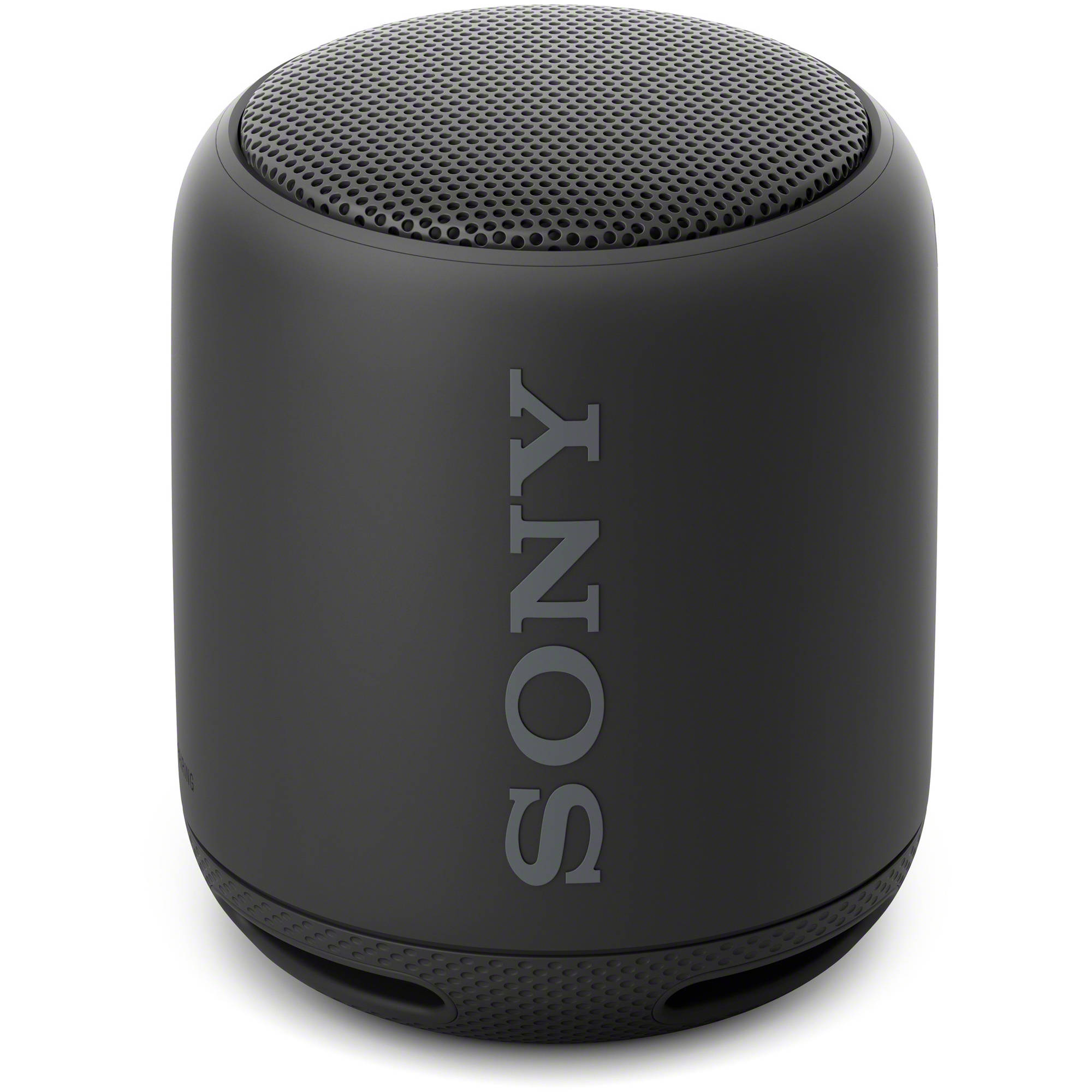
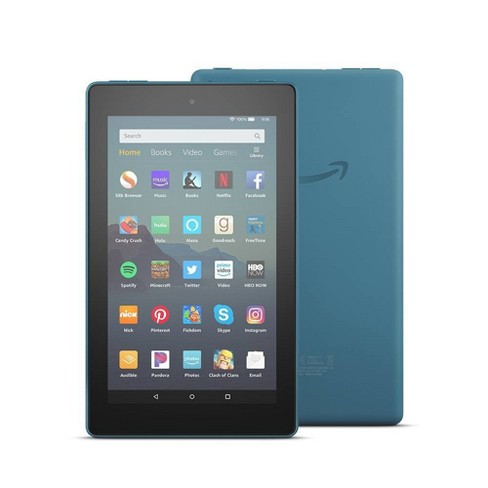
02.
Which gifts book meetings?
Whether you’re leveraging gifting for sales prospecting or to increase engagement in your marketing campaigns, picking a leading physical gift over a gift card will always feel more personal. But what about performance?
Even with the human-augmented AI research that Alyce provides, we’ve found that close to 1⁄3 of gifts sent will be exchanged for something else. The gifting scenarios of leading with a physical gift vs. a gift card produced claim rates on average that are within 6 percentage points of one another. However, we believe this is too general and open to biases to make the final call on performance, so focusing on the exchange rate across all gifts is the more important point.
That’s why the Power of Choice is so important in your corporate gifting.
When looking at the types of gifts sent versus the types of gifts claimed by recipients of gifts with required actions, there is a difference between what is sent versus accepted and a meeting booked as a result.
Below you can see that seldom does the gift sent popularity mirror the top gifts that are converting into meetings.
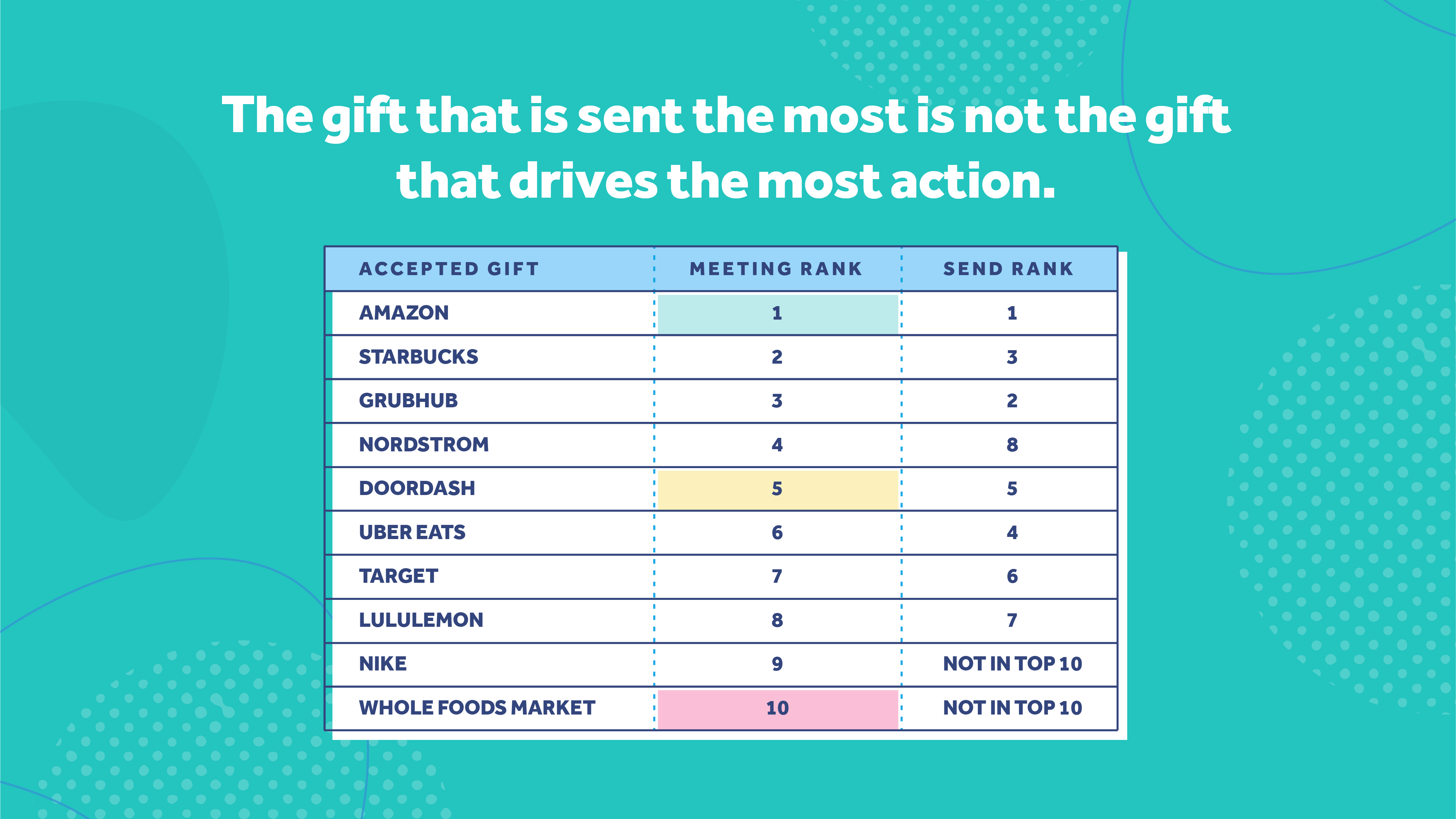
03.
Recipient declared data
These stats reinforce the fact that we will never know exactly what gift a recipient wants, which is why the Power of Choice is among the top gifting best practices.
Having exchange rate information across all gift recipients allows Alyce to be continuously gaining a better understanding of the gifts recipients were most likely to accept and find the right balance between offering the Power of Choice alongside powerful recipient-driven recommendations.
In addition to improvements made in Alyce’s gift recommendations engine, this year we also added a new part of the redemption process — a way for gift recipients to curate and create their own marketplaces by telling us what kinds of business gifts they wanted to choose from.
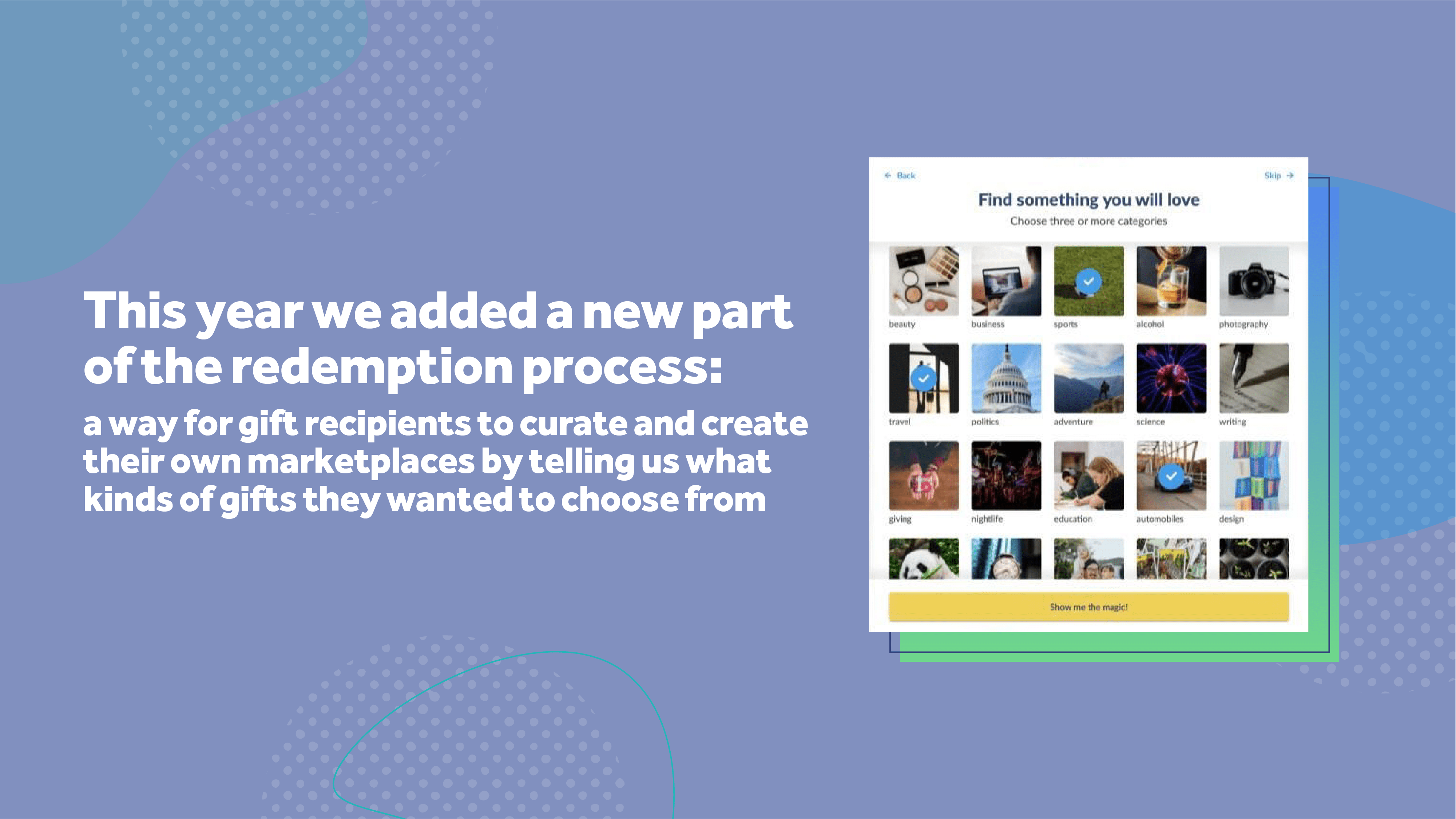
When recipients can be active participants in the gift redemption process, they have a higher rate of accepting a gift and interacting with your gifting campaign.
For example, when any user receives a gift from Alyce, and goes to exchange it, they are presented with a declared data workflow.
We’ve found that users who submit declared data claim gifts relative to users who don’t see this flow more often than users who don’t and 20% more often than users who see it but skip it.
Not only that but the quality of the interaction increases when users declare their own gift interest data. Nearly four times as many users who submit declared data claim a physical gift compared to users who skip it.
The top 10 most common tags declared by users themselves (in order) are:
- Tech and office products
- Travel
- Music
- Home design and decor
- Alcohol
- Outdoor activities
- Luxury goods
- Beauty
- Mind/body
- Reading
Now that we’ve covered our bases on when to send gifts, what gifts to send, and at what price point, let’s dive into some data around the frequency of gifting.
04.
Gifting use cases
When it comes to gifting, sometimes getting one gift out the door can feel like enough to engage with a prospect, especially when it comes to prospecting into accounts.
Being offered a gift at one point in the customer journey can feel like a great way to drive urgency and entice prospects to convert on your offers.
However, the data doesn’t tell that story.
Since October 2020, we found that for recipients gifted multiple times, the rate at which they accept their proceeding gifts is approximately 35% higher than the average claim rate over the same time period. We see this as a positive sign that users are:
- open to gifts at different points in a customer journey, and
- users’ reception grows (rather than wanes) once they have had an Alyce experience
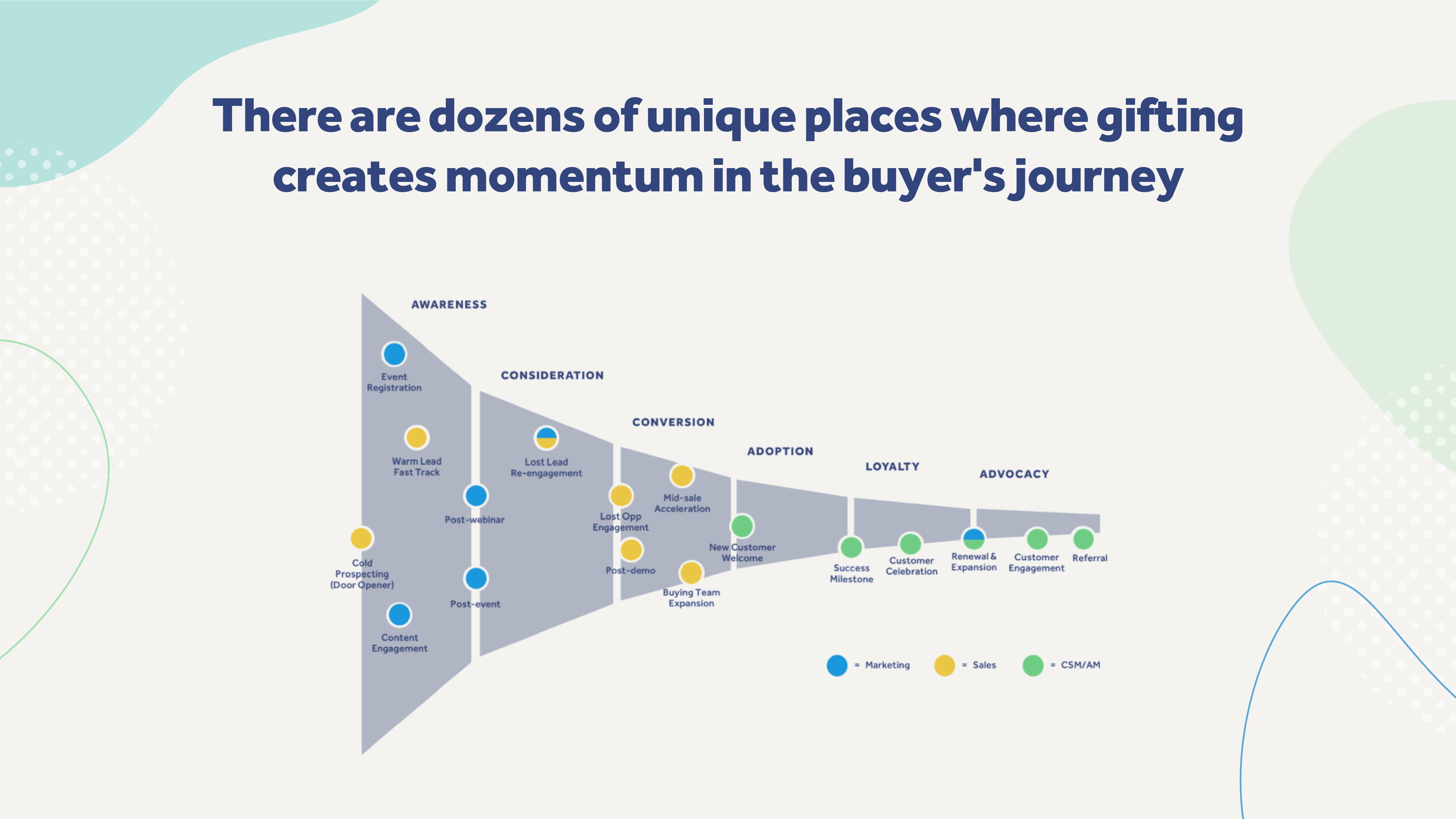
Leverage a mix of one-to-one moments and one-to-many gifting to increase conversion rates of your gifting campaigns.
Traditionally, gifting in B2B relies heavily on the sellers of a team leveraging gifting to open doors, accelerate deals, and drive loyalty in their champions. But there’s an untapped strategy in marketing-led gifting.
Gifting leads and prospects in a one-to-many format can help increase engagement rates in marketing campaigns from digital events to traditional nurture campaigns.
Throughout the year, we saw a 155% increase in one-to-many gifting across our customer base. We believe this growth is reflective of the increasing demand that marketing teams have to gift for their own campaigns, as they have evolved their understanding of the appropriate use cases for one-to-one vs. one-to-many gifting.
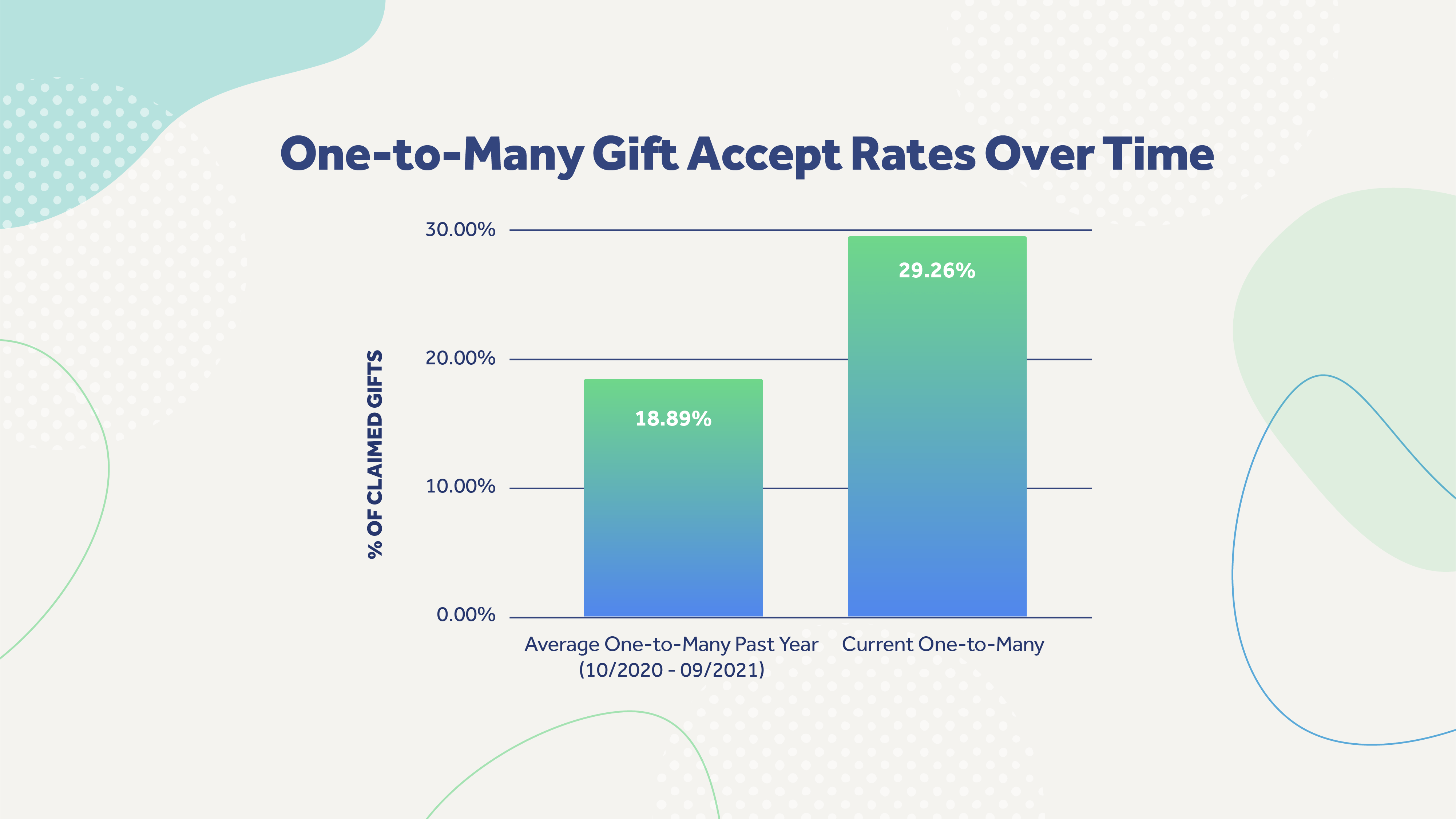
If you want any ideas on marketing-led, one-to-many gifting campaigns you can run in 2022, check this out for campaign, email, and gift ideas!
05.
Optimal gift follow up windows
Much like sending only one gift in the customer journey may hinder your overall outcomes, sending one gift without a follow up strategy in place significantly compromises your gifting conversion rates.
There are aspects to your gifting strategy that can impact how many gifts are accepted, which drives action and turn into pipeline for your business.
Personal gifting doesn’t simply include the actual gift itself. When you invest in this practice, you’re investing in the entire gift experience.
We know from last year’s State of Gifting report that it can take on average 8 days for a recipient to accept their gift:
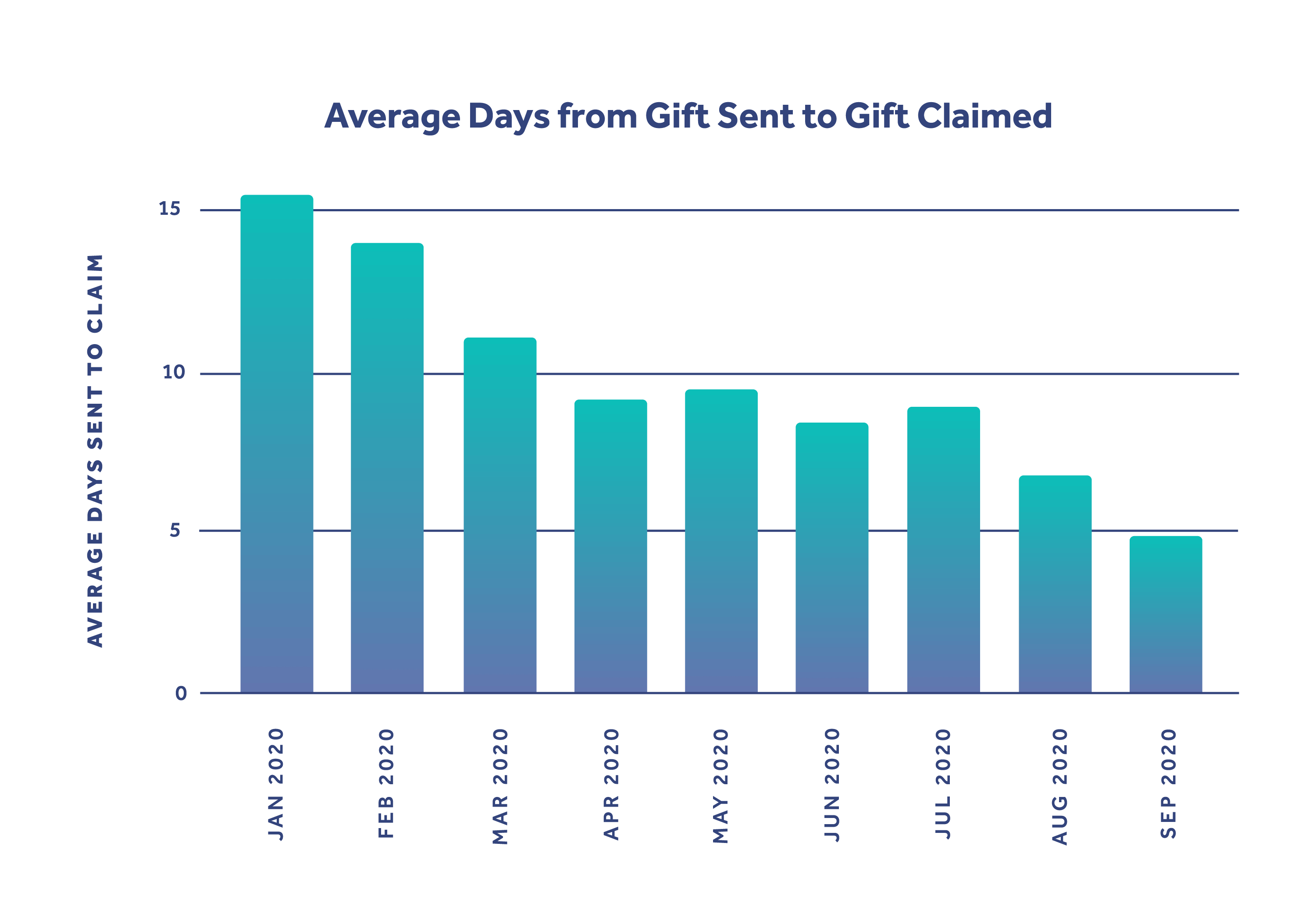
With this gap between gift sending and gift acceptance, gift senders can push this gift up to the top of recipients’ inboxes with strong follow-up communication.
But if your gifting platform doesn’t have automatic reminders built into it, you’re relying on adding another step to the gift senders’ process that they need to remember.
With personal gifting, the reminders are sent on your behalf, and the results you’ll see will be almost immediate.
Let us paint a picture for you:
Looking at a subset of gifts since October 2020 that had a reminder sent to the recip- ient because the gift wasn’t viewed after 2 days, 36% of the gifts that were claimed happened the day of or the day after the reminder was sent.
All of this to say, if you are not following up with your gifts, and your gifting platform doesn’t help you with the follow-up from your gifts, you are possibly missing out on at least an additional 36% of your claimed recipients converting with your gifting campaign.
The way forward is personal gifting
The world has become increasingly digital in the last two years. Using the traditional analog channels that were the standard in 2019 will not help you adapt fast enough to the changing times.
Leveraging a personal gifting platform is a significant first step to ensuring your business can keep up with the growing needs and expectations of your buyers.
There are so many moments in a single customer journey where gifting can be used to turn an impersonal touch into a memorable moment that drives momentum, loyalty, and trust with your business. However you choose to execute your gifting strategy in 2022 and beyond, we hope these insights help you create more relevant experiences for your audience while making the most of your digital investments.
